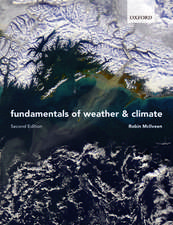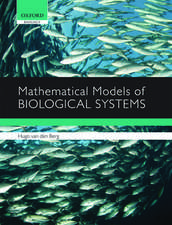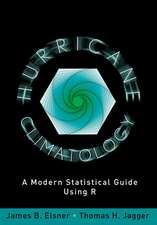Geometric Dynamics: Mathematics and Its Applications, cartea 513
Autor C. Udristeen Limba Engleză Paperback – 23 oct 2012
Din seria Mathematics and Its Applications
-
 Preț: 228.74 lei
Preț: 228.74 lei - 18%
 Preț: 938.64 lei
Preț: 938.64 lei - 15%
 Preț: 643.65 lei
Preț: 643.65 lei - 15%
 Preț: 647.19 lei
Preț: 647.19 lei - 15%
 Preț: 587.25 lei
Preț: 587.25 lei -
 Preț: 391.39 lei
Preț: 391.39 lei - 18%
 Preț: 948.52 lei
Preț: 948.52 lei - 15%
 Preț: 582.54 lei
Preț: 582.54 lei - 5%
 Preț: 650.34 lei
Preț: 650.34 lei - 15%
 Preț: 653.86 lei
Preț: 653.86 lei - 15%
 Preț: 643.80 lei
Preț: 643.80 lei - 15%
 Preț: 600.39 lei
Preț: 600.39 lei -
 Preț: 391.98 lei
Preț: 391.98 lei - 15%
 Preț: 647.05 lei
Preț: 647.05 lei -
 Preț: 374.76 lei
Preț: 374.76 lei -
 Preț: 391.60 lei
Preț: 391.60 lei - 15%
 Preț: 701.11 lei
Preț: 701.11 lei -
 Preț: 388.14 lei
Preț: 388.14 lei -
 Preț: 386.85 lei
Preț: 386.85 lei - 15%
 Preț: 580.76 lei
Preț: 580.76 lei - 15%
 Preț: 649.17 lei
Preț: 649.17 lei - 15%
 Preț: 582.72 lei
Preț: 582.72 lei - 20%
 Preț: 577.42 lei
Preț: 577.42 lei -
 Preț: 392.56 lei
Preț: 392.56 lei - 15%
 Preț: 597.46 lei
Preț: 597.46 lei - 15%
 Preț: 590.15 lei
Preț: 590.15 lei - 15%
 Preț: 647.05 lei
Preț: 647.05 lei - 15%
 Preț: 644.30 lei
Preț: 644.30 lei -
 Preț: 389.33 lei
Preț: 389.33 lei - 15%
 Preț: 644.30 lei
Preț: 644.30 lei - 15%
 Preț: 638.75 lei
Preț: 638.75 lei -
 Preț: 386.63 lei
Preț: 386.63 lei
Preț: 392.20 lei
Nou
Puncte Express: 588
Preț estimativ în valută:
75.11€ • 77.39$ • 62.92£
75.11€ • 77.39$ • 62.92£
Carte tipărită la comandă
Livrare economică 24 februarie-10 martie
Preluare comenzi: 021 569.72.76
Specificații
ISBN-13: 9789401058223
ISBN-10: 9401058229
Pagini: 416
Ilustrații: XVI, 395 p.
Dimensiuni: 160 x 240 x 22 mm
Greutate: 0.58 kg
Ediția:Softcover reprint of the original 1st ed. 2000
Editura: SPRINGER NETHERLANDS
Colecția Springer
Seria Mathematics and Its Applications
Locul publicării:Dordrecht, Netherlands
ISBN-10: 9401058229
Pagini: 416
Ilustrații: XVI, 395 p.
Dimensiuni: 160 x 240 x 22 mm
Greutate: 0.58 kg
Ediția:Softcover reprint of the original 1st ed. 2000
Editura: SPRINGER NETHERLANDS
Colecția Springer
Seria Mathematics and Its Applications
Locul publicării:Dordrecht, Netherlands
Public țintă
ResearchCuprins
1 Vector Fields.- 1.1. Scalar fields.- 1.2. Vector fields.- 1.3. Submanifolds of Rn.- 1.4. Derivative with respect to a vector.- 1.5. Vector fields as linear operators and derivations.- 1.6. Differential operators.- 1.7. Proposed problems.- 2 Particular Vector Fields.- 2.1. Irrotational vector fields.- 2.2. Vector fields with spherical symmetry.- 2.3. Solenoidal vector fields.- 2.4. Monge and Stokes representations.- 2.5. Harmonic vector fields.- 2.6. Killing vector fields.- 2.7. Conformai vector fields.- 2.8. Affine and projective vector fields.- 2.9. Torse forming vector fields.- 2.10. Proposed problems.- 3 Field Lines.- 3.1. Field lines.- 3.2. First integrals.- 3.3. Field lines of linear vector fields.- 3.4. Runge-Kutta method.- 3.5. Completeness of vector fields.- 3.6. Completeness of Hamiltonian vector fields.- 3.7. Flows and Liouville’s theorem.- 3.8. Global flow generated by a Killing or affine vector field.- 3.9. Local flow generated by a conformai vector field.- 3.10. Local flow generated by a projective vector field.- 3.11. Local flow generated by an irrotational, solenoidal or torse forming vector field.- 3.12. Vector fields attached to the local groups of diffeomorphisms.- 3.13. Proposed problems.- 4 Stability of Equilibrium Points.- 4.1. Problem of stability.- 4.2. Stability of zeros of linear vector fields.- 4.3. Classification of equilibrium points in the plane.- 4.4. Stability by linear approximation.- 4.5. Stability by Lyapunov functions.- 4.6. Proposed problems.- 5. Potential Differential Systems of Order One and Catastrophe Theory.- 5.1. Critical points and gradient lines.- 5.2. Potential differential systems and elementary catastrophes.- 5.3. Gradient lines of the fold.- 5.4. Gradient lines of the cusp.- 5.5. Equilibrium points of gradient ofswallowtail.- 5.6. Equilibrium points of gradient of butterfly.- 5.7. Equilibrium points of gradient of elliptic umbilic.- 5.8. Equilibrium points of gradient of hyperbolic umbilic.- 5.9. Equilibrium points of gradient of parabolic umbilic.- 5.10. Proposed problems.- 6. Field Hypersurfaces.- 6.1. Linear equations with partial derivatives of first order.- 6.2. Homogeneous functions and Euler’s equation.- 6.3. Ruled hypersurfaces.- 6.4. Hypersurfaces of revolution.- 6.5. Proper values and proper vectors of a vector field.- 6.6. Grid method.- 6.7. Proposed problems.- 7. Bifurcation Theory.- 7.1 Bifurcation in the equilibrium set.- 7.2 Centre manifold.- 7.3 Flow bifurcation.- 7.4 Hopf theorem of bifurcation.- 7.5 Proposed problems.- 8. Submanifolds Orthogonal to Field Lines.- 8.1. Submanifolds orthogonal to field lines.- 8.2. Completely integrable Pfaff equations.- 8.3. Frobenius theorem.- 8.4. Biscalar vector fields.- 8.5. Distribution orthogonal to a vector field.- 8.6. Field lines as intersections of nonholonomic spaces.- 8.7. Distribution orthogonal to an affine vector field.- 8.8. Parameter dependence of submanifolds orthogonal to field lines.- 8.9. Extrema with nonholonomic constraints.- 8.10. Thermodynamic systems and their interaction.- 8.11. Proposed problems.- 9. Dynamics Induced by a Vector Field.- 9.1. Energy and flow of a vector field.- 9.2. Differential equations of motion in Lagrangian and Hamiltonian form.- 9.3. New geometrical model of particle dynamics.- 9.4. Dynamics induced by an irrotational vector field.- 9.5. Dynamics induced by a Killing vector field.- 9.6. Dynamics induced by a conformai vector field.- 9.7. Dynamics mduced by an affine vector field.- 9.8. Dynamics induced by a projective vector field.- 9.9. Dynamics induced by a torse formingvector field.- 9.10. Energy of the Hamiltonian vector field.- 9.11. Kinematic systems of classical thermodynamics.- 10 Magnetic Dynamical Systems and Sabba ?tef?nescu Conjectures.- 10.1. Biot-Savart-Laplace dynamical systems.- 10.2. Sabba ?tef?nescu conjectures.- 10.3. Magnetic dynamics around filiform electric circuits of right angle type.- 10.4. Energy of magnetic field generated by filiform electric circuits of right angle type.- 10.5. Electromagnetic dynamical systems as Hamiltonian systems.- 11 Bifurcations in the Mechanics of Hypoelastic Granular Materials.- 11.1. Constitutive Equations.- 11.2. The Axial Symmetric Case.- 11.3. Conclusions.- 11.4. References.













